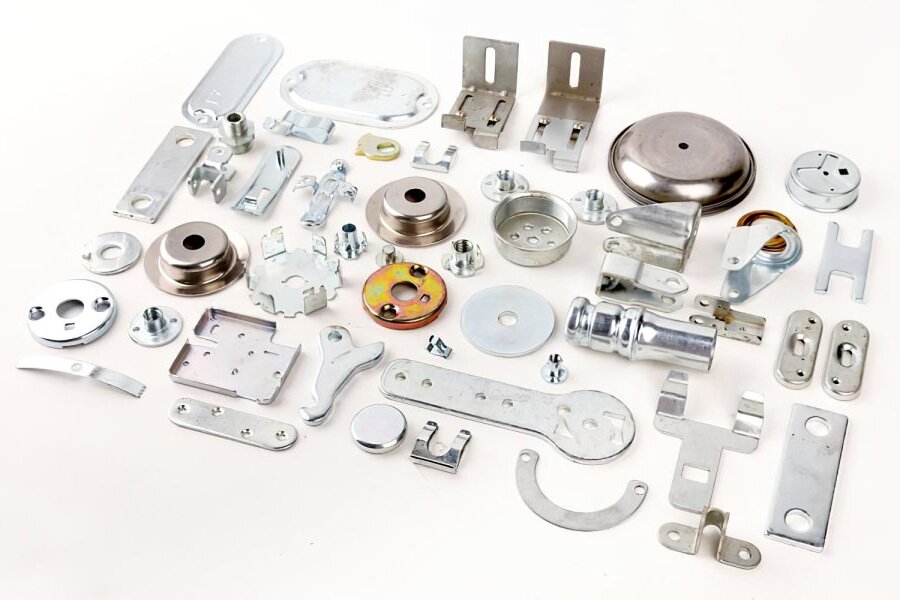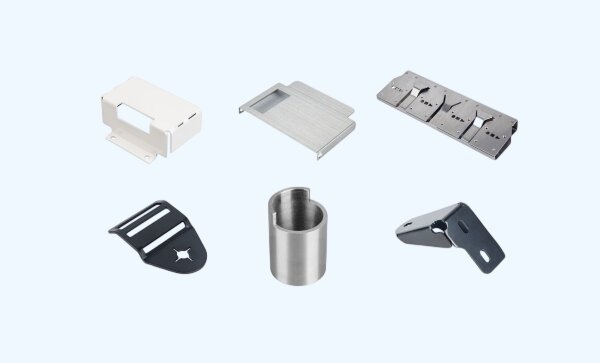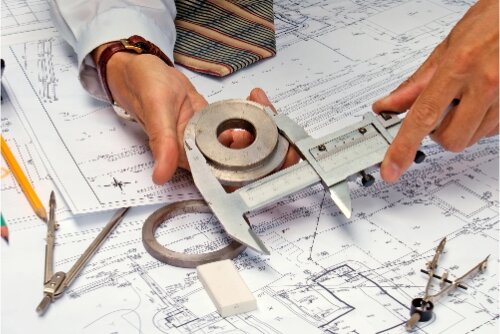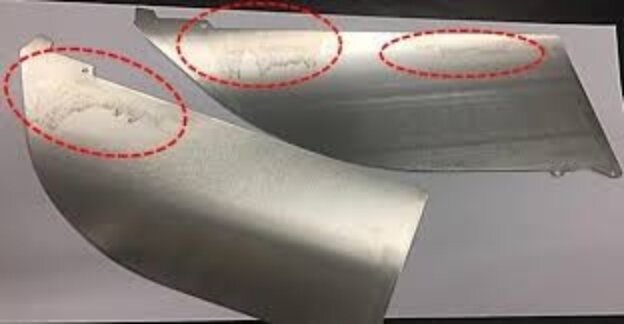Many industries need strong, durable, and cost-effective parts. Traditional materials often fail to resist rust or wear. This leads to higher costs and frequent replacements. Galvanized steel stamping solves these problems. It provides corrosion resistance, strength, and flexibility for different applications.
This process is simple to learn yet powerful in use. Let’s examine how it works, why it matters, and where it applies.

What Is Galvanized Steel Stamping?
Galvanized steel stamping is a process that shapes galvanized steel sheets into custom parts. Before stamping, the steel is coated with a thin layer of zinc, which forms a barrier that prevents rust and surface damage. The stamping process uses dies and presses to cut, bend, or create the steel into specific shapes.
This method is widely used because it supports mass production while maintaining consistent quality. The zinc coating does not crack or peel during stamping if handled correctly. This ensures the protective layer remains intact, keeping the final part resistant to moisture and harsh conditions.
Fundamentals of Galvanized Steel
Galvanized steel is one of the most widely used materials in stamping and fabrication. Its unique properties make it reliable, versatile, and suitable for various industries.
Properties of Galvanized Steel
Galvanized steel has a zinc coating that bonds to its surface. This coating acts as a protective barrier against moisture and air. The zinc prevents rust and slows down surface wear. Even if the layer is scratched, zinc provides cathodic protection, which means it sacrifices itself to shield the exposed steel.
The material is strong yet workable. It maintains the mechanical strength of steel while resisting corrosion. It is easy to stamp, weld, and form into complex shapes. The smooth finish allows for painting or powder coating when needed.
Different Types of Galvanization
There are several methods of galvanizing steel, and each type has unique features.
- Hot-Dip Galvanization: The steel is dipped into molten zinc. This forms a thick, durable coating that protects against rust for decades. It is ideal for outdoor structures, heavy equipment, and parts exposed to harsh weather.
- Electro-Galvanized Steel: A thin zinc coating is applied using an electroplating process. The finish is smooth and uniform, which makes it suitable for applications where appearance matters, such as appliances and automotive parts. However, the thinner coating offers less corrosion resistance than hot-dip.
- Galvalume: This type uses a coating of zinc mixed with aluminum. It combines the rust resistance of zinc with the heat and oxidation resistance of aluminum. Galvalume is commonly used in roofing, siding, and high-heat exposure environments.
The Stamping Process for Galvanized Steel
Stamping galvanized steel needs accuracy and the proper setup. The process shapes coated sheets into strong parts while protecting the zinc layer that prevents rust.
Progressive Die Stamping for Galvanized Steel
Progressive die stamping is suited for making small to medium parts in large numbers. A steel strip passes through several dies, and each station performs a different step. The material is cut, bent, or shaped as it moves forward. Finished parts come out at the end of the line. This method reduces handling, improves accuracy, and supports fast production of galvanized steel components.
Transfer Press Stamping for Large Components
Transfer press stamping is better for large or complex parts that cannot be made with progressive dies. In this process, individual blanks are cut first, then moved through multiple stations with transfer systems. Each station shapes the blank further until the part is complete. This method allows for more freedom in design and is often used for car panels, structural parts, and other large galvanized steel products.
Deep Drawing Applications
Deep drawing forms flat galvanized sheets into deep, hollow shapes. A punch pushes the sheet into a die cavity, creating items like cans, enclosures, or housings. The zinc layer must remain intact to protect against rust. Proper lubrication and well-designed tools prevent the coating from cracking or peeling. This process gives the final product strength and corrosion resistance, making it useful for many industrial and consumer needs.

Design Considerations in Galvanized Steel Stamping
Designing stamped parts with galvanized steel requires careful planning. Factors like coating, sheet thickness, and part geometry affect strength and durability. Good design choices help reduce waste and maintain consistency in quality.
Thickness and Coating Selection
Sheet thickness plays a significant role in performance. Thinner sheets are easier to stamp and shape but may lack strength for heavy-duty use. Thicker sheets provide more strength but require a higher force during stamping.
The zinc coating also matters. A thicker layer provides better corrosion protection but is more likely to crack in sharp bends. Thinner coatings improve formability and surface smoothness but offer less protection. Designers must balance these trade-offs based on the part’s final use.
Tolerance and Dimensional Accuracy
Stamped parts must fit tight tolerances. Galvanized steel adds an extra challenge because the zinc coating slightly changes the sheet’s thickness. Designers need to account for this when setting dimensions.
Accurate tooling and stable stamping operations keep parts within limits. In large production runs, ongoing checks are needed to avoid drift. Even minor errors can lead to poor assembly or reduced function.
Minimizing Flaking, Cracking, or Coating Damage
The zinc coating shields the steel from rust, but stamping can stress the surface. If the tools are rough or the force is too high, the coating may crack or flake, lowering corrosion resistance and reducing part life.
Designers can avoid these problems using larger bend radii, smoother tool surfaces, and proper lubrication. Controlled stamping speeds also reduce stress on the coating. Careful design and process control protect the zinc layer, helping ensure strong and long-lasting parts.
Advantages of Using Galvanized Steel in Stamping
Galvanized steel offers a combination of strength, protection, and affordability, making it one of the most dependable materials for stamping projects. Its properties support both small prototypes and high-volume production runs.
Corrosion Resistance
The zinc coating shields the steel from rust and environmental damage. Even when the surface is scratched, zinc provides sacrificial protection to exposed areas. This makes galvanized steel highly durable in outdoor or moisture-prone conditions. Products last longer and do not need replacement or extra coatings.
Cost-Effective Protection
Galvanized steel delivers long-term protection at a lower cost than alternatives like stainless steel. The galvanizing process is efficient and widely available, keeping material costs down. Its low maintenance requirements also save money over the product’s lifetime.
Strong Yet Formable
Galvanized steel maintains its inherent strength while allowing for stamping, bending, and forming. The material can handle complex shapes without losing structural integrity. Proper tooling and process control keep the zinc layer intact, giving it both strength and surface protection.
Wide Availability
Galvanized steel is produced in large volumes worldwide, ensuring a steady supply and short lead times. It is available in many thicknesses, coating weights, and grades, making it adaptable for different applications. This availability gives manufacturers flexibility to meet diverse design and production needs.

Challenges in Galvanized Steel Stamping
While galvanized steel is reliable and versatile, it also presents challenges during stamping. Engineers and manufacturers must address these issues to maintain quality and extend tool life.
Tool Wear and Damage
The zinc coating on galvanized steel is abrasive. During stamping, it increases friction between the sheet and tooling. This accelerates tool wear and shortens die life. Frequent maintenance or use of coated and hardened dies can help reduce this problem.
Coating Cracking and Flaking
The protective zinc layer may crack or flake under high pressure or tight bending. Once the coating breaks, exposed steel becomes vulnerable to corrosion. Proper bend radii, optimized forming speeds, and smoother tooling surfaces can limit coating damage.
Lubrication Issues
Galvanized steel requires careful lubrication during stamping. The zinc surface can absorb or react with some lubricants, reducing their effectiveness. Without proper lubrication, friction increases, raising the risk of coating damage and tool wear. Using the correct lubricant type and applying it evenly helps ensure smooth operation.
Welding and Joining Difficulties
Joining galvanized steel can be more difficult than plain steel. The zinc coating can release fumes during welding, impacting quality and safety. Specialized welding techniques and ventilation systems are often required. Sometimes, designers choose mechanical fastening or adhesive bonding to avoid welding challenges.
Applications of Galvanized Steel Stamping
Galvanized steel stamping is used in many industries because it combines durability, strength, and corrosion resistance. Its versatility makes it suitable for significant structural and small precision components.
Automotive Industry
Automakers use galvanized steel for panels, frames, and brackets exposed to moisture and road salts. The zinc coating protects against rust, extending vehicle life. Stamped parts also maintain strength and dimensional accuracy, critical for safety and performance.
Construction Industry
In construction, galvanized steel stamping provides long-lasting roofing sheets, wall panels, and structural connectors. These parts resist weather damage, making them ideal for outdoor use. The material’s strength supports heavy loads, while its corrosion resistance reduces maintenance needs.
Electrical and Electronics
Galvanized steel is widely used for electrical enclosures, cabinets, and equipment frames. The coating prevents rust in humid or outdoor environments, protecting sensitive components. Stamped parts also provide precision fits and reliable strength for mounting and housing electrical systems.
Consumer Goods and Appliances
Stamped galvanized steel is found in everyday products like washing machines, refrigerators, and air conditioners. The coating protects against moisture and wear, extending product life. Its smooth finish improves appearance and supports additional coatings or paint when needed.
Conclusion
Galvanized steel stamping is a reliable and versatile process for creating strong, corrosion-resistant, cost-effective parts. It combines the durability of steel with the protective zinc coating, making it ideal for industries like automotive, construction, electronics, and appliances. Proper design, material selection, and stamping techniques ensure high-quality parts while maintaining coating integrity.
If you want to produce precise, long-lasting galvanized steel components, contact us today to discuss your project and get expert guidance on the best stamping solutions.
Hey, I'm Kevin Lee

For the past 10 years, I’ve been immersed in various forms of sheet metal fabrication, sharing cool insights here from my experiences across diverse workshops.
Get in touch

Kevin Lee
I have over ten years of professional experience in sheet metal fabrication, specializing in laser cutting, bending, welding, and surface treatment techniques. As the Technical Director at Shengen, I am committed to solving complex manufacturing challenges and driving innovation and quality in each project.




